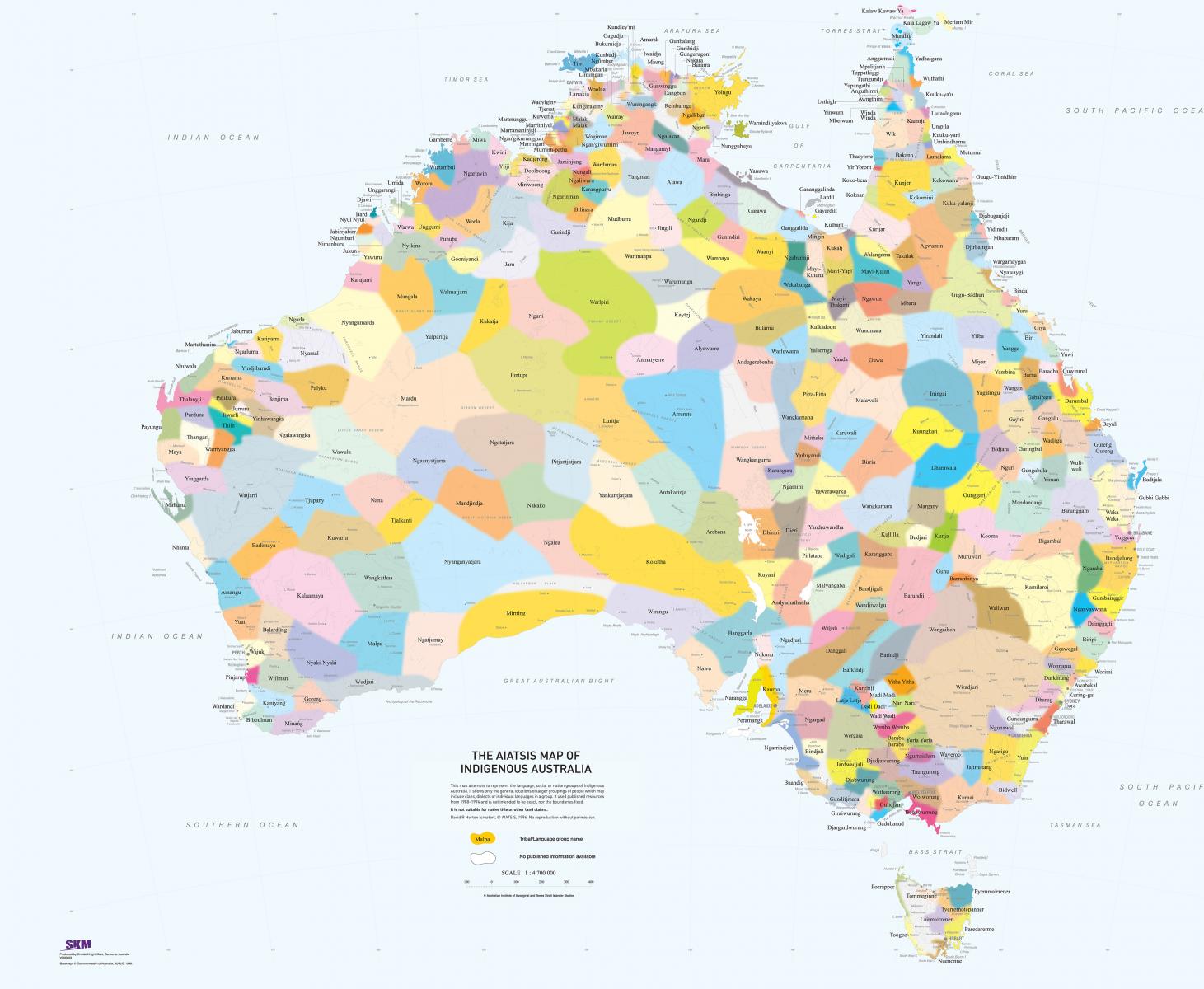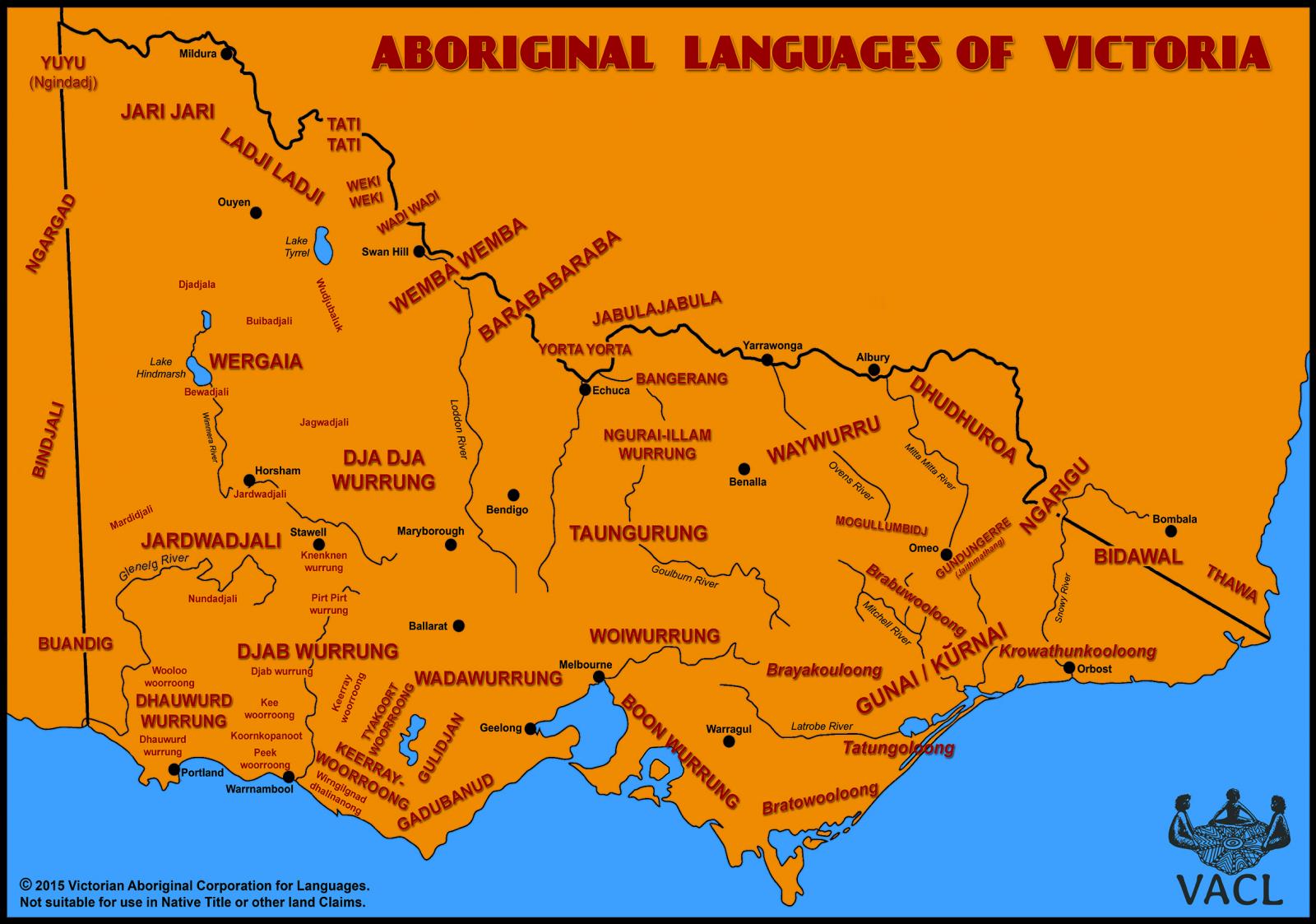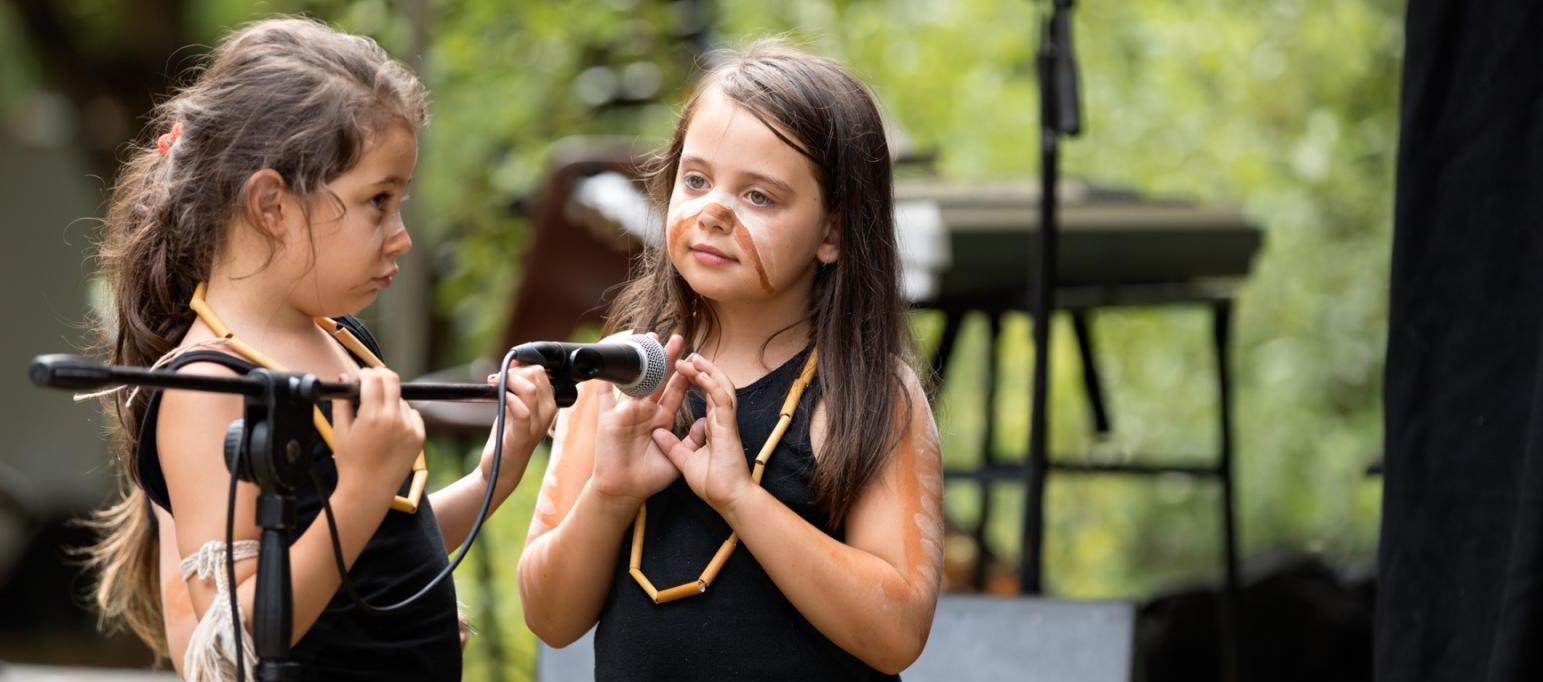Language is not just about how we communicate but is a vital part of who we are as Aboriginal and Torres Strait Islander people.
Updated 2nd May 2018
Language expresses our culture, our world view, our knowledge and our identity. Across Australia, there are around 250 Aboriginal language groups, with about 40 in Victoria. There are also many different dialects. There is huge richness and diversity in Aboriginal languages.
Words used in English that come from Aboriginal languages include kangaroo, billabong and koala. Many place names in Victoria come from Aboriginal words, including Ballarat (from Wathaurong language), Warrnambool (from Dhauwurd Wurrung language) and Tullamarine (from Woi Wurrung language).[1]
Across Australia, there are around 250 Aboriginal language groups, with about 40 in Victoria.
While the impacts of colonisation have been devastating for our languages, there are many Aboriginal people and organisations in Victoria working hard to revive and teach language. This article provides a summary of key issues around Victorian Aboriginal languages and language revival.
Our Mother Tongue: GunaiKurnai from ABC Open Albury-Wodonga on Vimeo.
[1] Ian D Clarke, Toby Heydon 2002, Aboriginal Placenames of Melbourne and Central Victoria, Aboriginal Placenames of Southwest Victoria, Victorian Aboriginal Corporation for Languages.


"Culture is expressed through language so language is a good medium for keeping culture strong. I feel good when I sing in language, because it’s my language. It’s part of who I am" – Corey Theatre (Djab Wurrung)
Image: Aboriginal Language Map, AIATSIS.
THE IMPORTANCE OF LANGUAGE
Language isn’t just words to describe the world around us. It expresses and reflects the world view of a group of people, including beliefs, knowledge and identity.
For Aboriginal people, our language is a core part of our culture that reflects our values, stories, songs and our relationship to Country.
Aboriginal languages are very unique and have very specific linguistic traits that reflect culture. For example, in many Aboriginal languages, the words you use differ significantly depending on who you’re speaking with and how you are connected to that person through kinship systems. This shows how important relationships to kin and Community are in our culture.
Language also represents a connection to our ancestors, who have spoken these words and told stories for thousands and thousands of years. As a connection to our ancestors, Country and culture, Aboriginal languages empower Communities and people to be strong in identity and knowledge of language contributes to our wellbeing.


Image: Victorian Aboriginal Language Map, VACL.
LANGUAGES IN VICTORIA
The Victorian Aboriginal Corporation for Languages (VACL) has created a map of Aboriginal languages in Victoria. While there is some overlap between languages and boundaries are often not clear, the majority are considered to be distinct, separate languages.
IMPACT OF COLONISATION
Colonisation had a huge impact on Aboriginal languages, as British and then Australian governments actively sought to prevent Aboriginal people from practicing culture, including speaking our languages. These practices were devastating and many languages have been lost or have declined to a critical state.
Language makes you feel whole, you know you are an Aboriginal person but it’s like a missing jigsaw link that you want to put together – Aunty Fay Stewart-Muir (Boonwurrung)
ABORIGINAL ENGLISH
Aboriginal people have adapted to the changes brought about by colonisation in many different ways, including in the way we speak. Even though English was forced on Aboriginal people by the British, Aboriginal people have adapted this language to reflect our cultural values and customs. As a result, many Aboriginal people in Victoria speak Aboriginal or Koorie English.
Aboriginal English has distinct rules and expressions. For example, direct requests are often avoided and body language is used to support words. It also reflects Aboriginal cultural values, for example respect for Elders. Words commonly used in Aboriginal English include deadly, mob and yarn.
Linguists at the University of Melbourne have been going into Indigenous communities to record and better understand these languages.
Image: Barbara Oehring Photography
REVIVING LANGUAGE
Although many Aboriginal languages have been lost or are critically threatened, there is also a great deal of work happening to revive our languages in Victoria. Many of our mob are working tirelessly to have our languages flourish again and pass their knowledge to the next generation.
VACL is an important organisation doing this work. VACL is an organisation focused on “retrieving, recording and researching Aboriginal languages.” They have created many resources, programs and educational tools across the State to promote and revive Aboriginal languages. VACL have created and run:
- Language programs in schools and pre-schools/playgroups
- Teaching resources
- Language apps for Gunditjmara, Gunnai/Kurnai, Woi Wurrung, Wemba Wemba, Wadawurrung and Tati Tati/Mutti Mutti/Latji Latji/Wadi Wadi
- Digital story books, and
- Dictionaries.
This article shows VACL’s Yirruk-Tinnor Gunnai/Kurnai Language Program in action.
Aboriginal languages can also be taken as a VCE subject in some schools. Languages studied to date include Yorta Yorta, Wergaia, Gunnai/Kurnai and Dhudhuroa. Students learning Dhudhuroa were featured in an article in the Age from 2015.
The organisation First Languages Australia have created an interactive map of Aboriginal and Torres Strait Islander languages, including videos from different ‘language legends’ talking about the work they’re doing to revive and strengthen language. The Melbourne Museum’s Bunjilaka collection has also developed a map of Victorian languages.
Have a look at the Deadly Story language resources at the bottom of this page for more links and information about languages.
What can children and young people do to learn language?
If you and your family are interested in learning your mob’s language, there are heaps of different things you can do. You can download one of the VACL apps mentioned above, talk to your school about language programs or get a story book or dictionary in language.
Learning a language can be hard and it’s often a very slow process. Even learning some words and phrases is a great way to connect to your deadly culture and be proud, so why not give it a go?
OUR DEADLY LANGUAGES QUIZ
LANGUAGE RESOURCES
Resources to find out more about languages
- Victorian Aboriginal Corporation for Languages
- VACL online library
- VACL language fact sheets
- VACL shop
- Federation of Aboriginal and Torres Strait Islander Languages (FATSIL)
- Bunjilaka – Melbourne Museum
- Australian Institute of Aboriginal and Torres Strait Islander Studies
- ABC’s ‘Mother Tongue’ video and article series
- ABC Radio National ‘Holding our Tongue’ resource
- ABC Education Resources – Aboriginal Languages
- First Languages Australia
- Rediscovering Indigenous Languages Project (State Library of NSW)
- Australian Indigenous Language Collections (National Library of Australia)
- Our Languages
- Patyegarang
- Aboriginal Community Leaders Talk About Language (Interview Series)
News Articles
- Indigenous languages come from just one common ancestor, researchers say from ABC News
- ‘Some Australian Indigenous languages you should know’ from the Conversation
- ‘Learn words in Indigenous Australian languages with four young speakers’ from the ABC
- ‘Lost Indigenous languages concerns Central Victorian youth’ from the ABC
- ‘How to say g'day in your local Indigenous language’ from Fairfax Media
- 'Language revival preserving history' from The Sydney Morning Herald
- Georgina Kenyon, 'Australia's ancient language shaped by sharks', BBC Travel
- 'The survival of Australia's endangered languages – an audio-photo essay', The Guardian
- Helen Davidson, 'Most Australian Indigenous languages came from just one place, research claims', The Guardian

